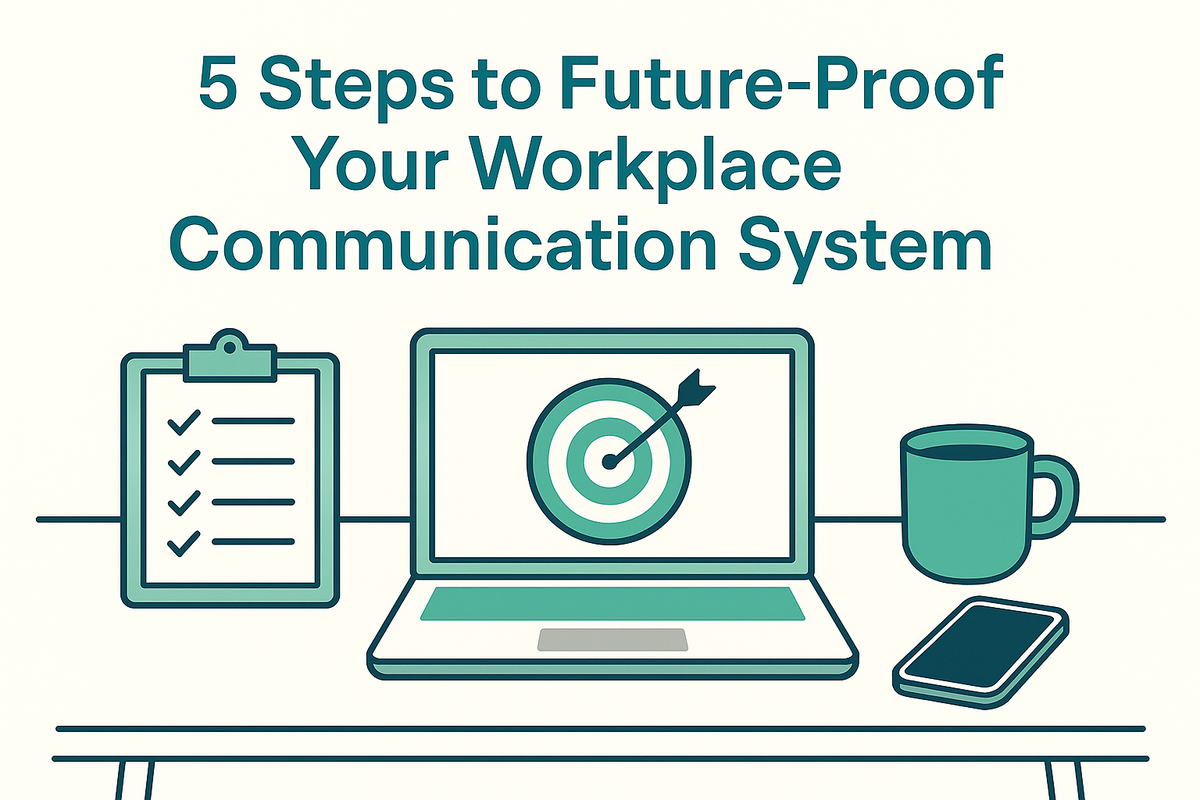5 Steps to Future-Proof Your Workplace Communication System
It's time to future proof your workplace communication for the coming AI storm.

Communication systems built for yesterday’s speed and scale are breaking under today’s pressure.
AI has fundamentally changed how information flows, how fast decisions are made, and how quickly audiences expect relevance.
Modern communication isn’t just about producing content faster.
It’s about building systems that are adaptive, intelligent, and strategically coherent — balancing human judgment with AI’s speed and reach.
Here’s how to future-proof your communication system now — before you get left behind.
1. Review How Communication Really Moves
Most communication problems aren't about message quality. They're about how (and whether) information moves through the organisation at the right speed, to the right people, in the right way.
Audit your current system:
- How do messages flow between leadership, teams, and external audiences?
- Where do bottlenecks occur — approvals, production, leadership clarity?
- Which platforms are helping — and which are adding noise without traction?
Look for hidden friction points, gaps in message translation, and areas where insight gets lost before action happens.
The goal:
Understand your actual system dynamics, not just the number of emails sent or events held.
2. Map Where AI Should — and Shouldn’t — Play a Role
AI isn’t about automating everything.
It’s about amplifying what matters — and designing human-AI collaboration thoughtfully.
Key areas where AI can add value today:
- Drafting content for lower-risk, repeatable messaging
- Segmenting audiences and personalising at scale
- Analysing engagement and surfacing narrative gaps
- Testing variations to optimise message impact
But:
Critical leadership messages, strategic narratives, and ethical judgments must stay human-led.
Use AI for speed and scale.
Use humans for coherence, meaning, and trust.
3. Anchor Communication Directly to Business Strategy
A future-proof communication system is not a side-channel — it’s embedded into the strategic core.
Connect communication flows to your organisation’s real goals:
- How do messages advance strategic priorities?
- How does communication support change, alignment, and decision-making?
- What strategic narratives need to be consistent across all channels and formats?
Strategic clarity must anchor every workflow, every message, every dashboard.
Otherwise, you’re just communicating faster — without moving the organisation anywhere.
4. Reskill Your Team for Strategic Communication in an AI World
Tomorrow’s communication teams aren’t just writers or channel managers.
They’re system designers, narrative architects, and strategic advisors.
Key skills to build:
| Skill Area | Focus |
|---|---|
| AI Literacy | Understand where AI supports — and where it shouldn't replace human judgment |
| Strategic Planning | Connect communication directly to organisational priorities |
| Data Interpretation | Turn AI insights into human decisions and narrative refinement |
| Narrative Crafting | Create consistent, adaptable messaging frameworks that guide AI and humans alike |
Building these capabilities ensures your team shapes the system — not just supervises it.
5. Build Agile, Flexible Workflows
Rigid communication processes are a liability in an AI-driven environment.
Design systems that can:
- Prioritise messaging based on business impact, not production cycles
- Adapt approvals based on risk levels (low-risk content = faster cycles)
- Integrate AI outputs without losing governance or coherence
- Enable real-time feedback and rapid iteration
Think like an operating system, not a production line.
The test:
Can your communication system pivot at the speed strategy demands — without breaking alignment or losing leadership credibility?
Preparing for the Next Shift
Building a future-proof communication system isn’t optional anymore.
It’s survival.
Organisations who redesign now will move faster, with more strategic traction, more trust, and more adaptive leadership communication.
And there’s another shift coming:
Autonomous AI agents designed specifically for communication — capable of monitoring engagement, optimising narratives in real-time, and dynamically adjusting messaging across channels.
When that moment arrives, communication systems built only for human speed and control will collapse under the new complexity.
The organisations who design adaptive, human-led, AI-augmented systems now will be ready.
Is your communication system built to survive and thrive in the AI era? Start with a Sound & Signal Review.
FAQs
Why does communication need a system redesign now?
Because AI has already shifted the speed, scale, and expectations of communication — and old models built for manual delivery can’t keep up.
What’s the biggest mistake organisations make when adding AI to communication?
Thinking AI is just about faster content production, rather than redesigning communication flows, governance, and strategic alignment for an AI-augmented world.
How can organisations ensure AI doesn't fragment their messaging?
Anchor all communication — human or AI-generated — to a strong strategic narrative and governance framework. Human oversight on system design is non-negotiable.



